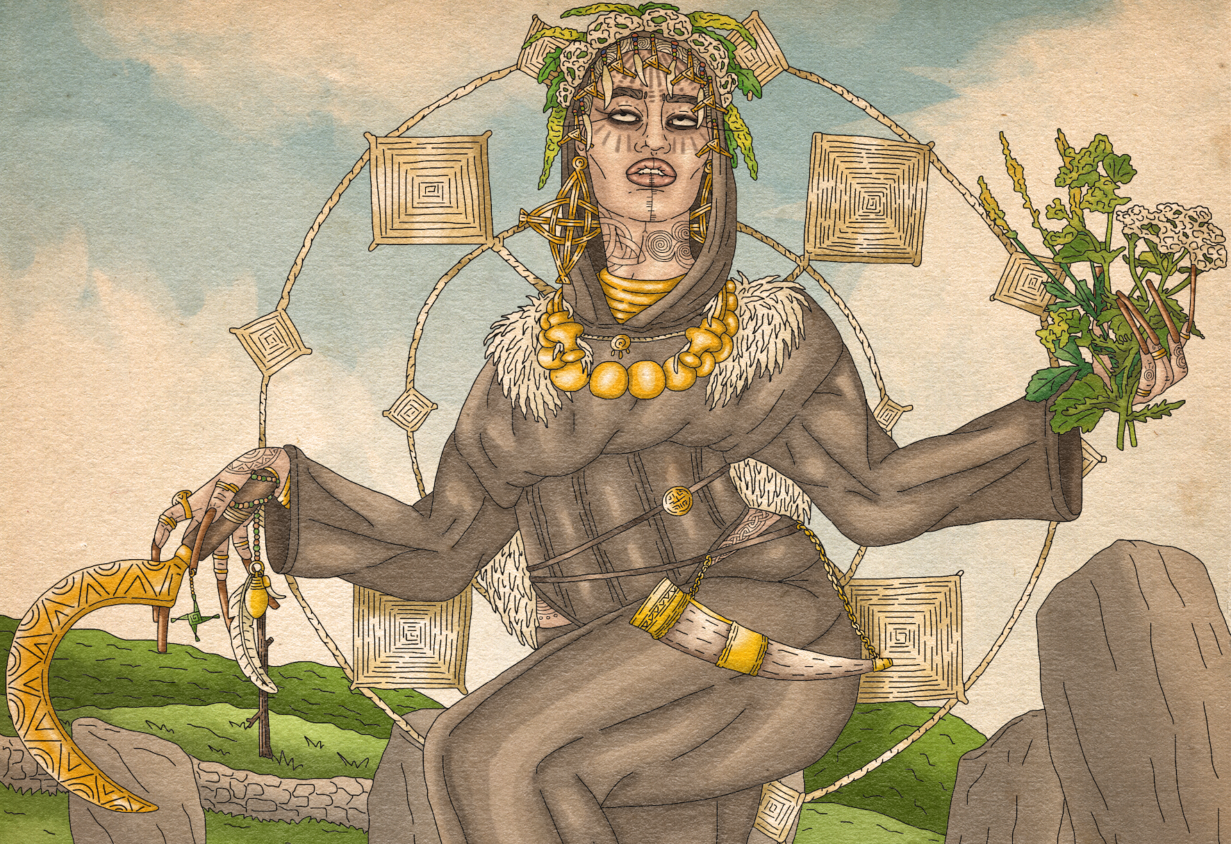ST. DIABHAL DISCUSSES THEIR PRACTICE AND WORK IN THE CONTEXT OF MODERN MYTHOLOGY, HISTORY, AND A NEW CELTIC REVIVAL.
Evolution of Practice
I’ve always drawn to art, for as long as I can remember. Art was the one thing I truly loved and felt I could excel at. I wasn’t the most academic in school, but art was the subject I poured my energy into. It was the one area where I felt confident, and it showed – I earned an A in art for my Leaving Cert, which really highlighted where my focus lay. After school, I pursued a PLC course in Kilkenny before moving on to study at the Limerick School of Art & Design (LSAD).
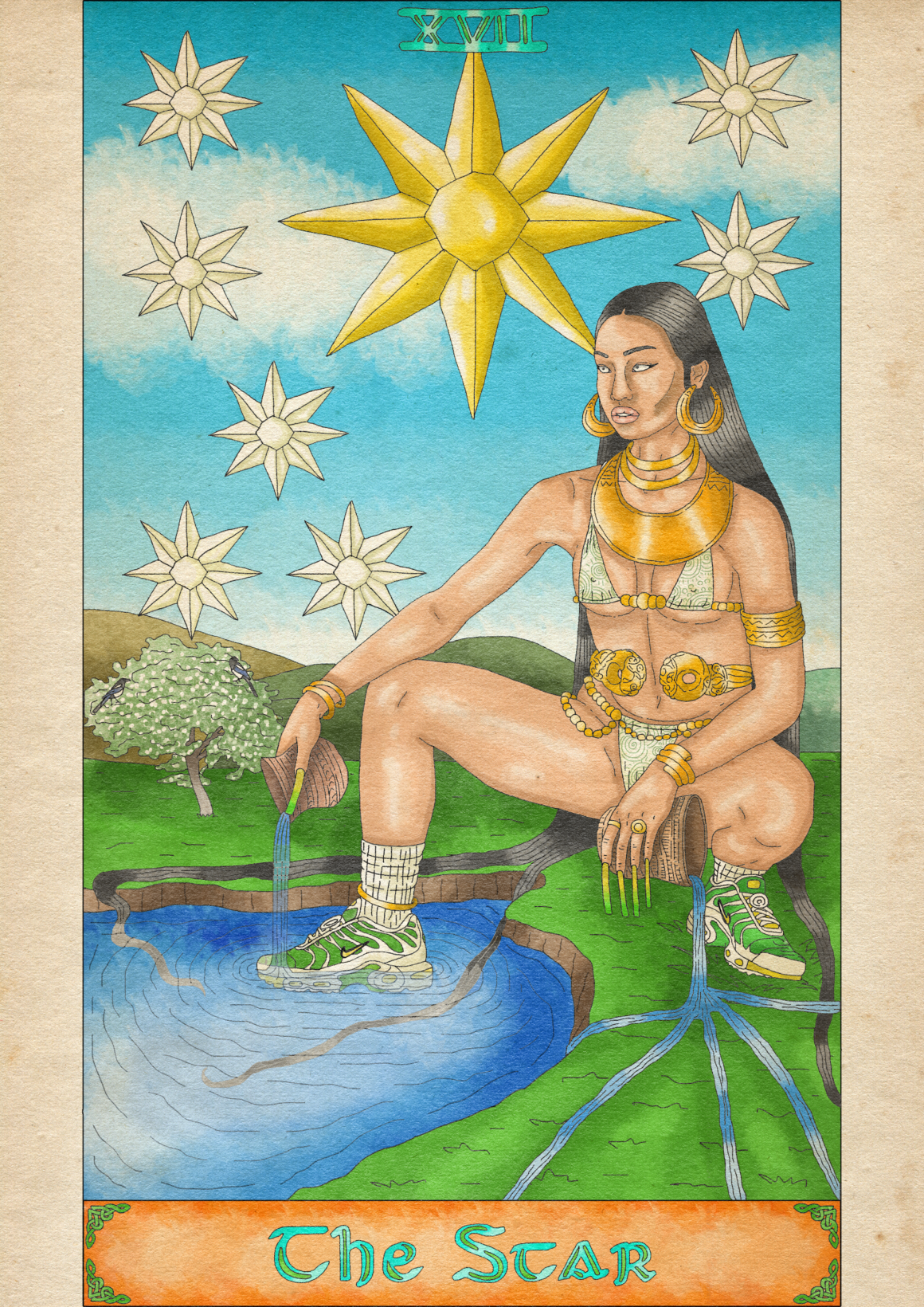
In college, I continued to draw, but early on, many of my tutors advised me to move away from this style of art, thinking it wasn’t the most interesting path. I then shifted towards photography and lens-based media, working a lot with video and photography. This opened up a new passion for styling and creating characters, often using myself and my friends as subjects. However, the themes of folklore, witchcraft, and even online character creation continued to emerge in my work.
These themes, I believe, have deep roots in my childhood. I spent a lot of time playing with dolls, which was something I kept to myself, as I was quite ashamed of it at the time. But as I grew older and became more comfortable with my identity, especially as a gay man, I realised that these characters I created were an important part of my personal journey. In a way, my art today is still about creating these imaginary figures, transforming them into something meaningful.
Over time, my practice has evolved significantly. I’ve experimented with various styles, but I’ve now reached a place where I feel that I’ve successfully merged all of my interests – my love of folklore and myth, alongside my passion for fashion and pop culture – into one cohesive artistic vision.
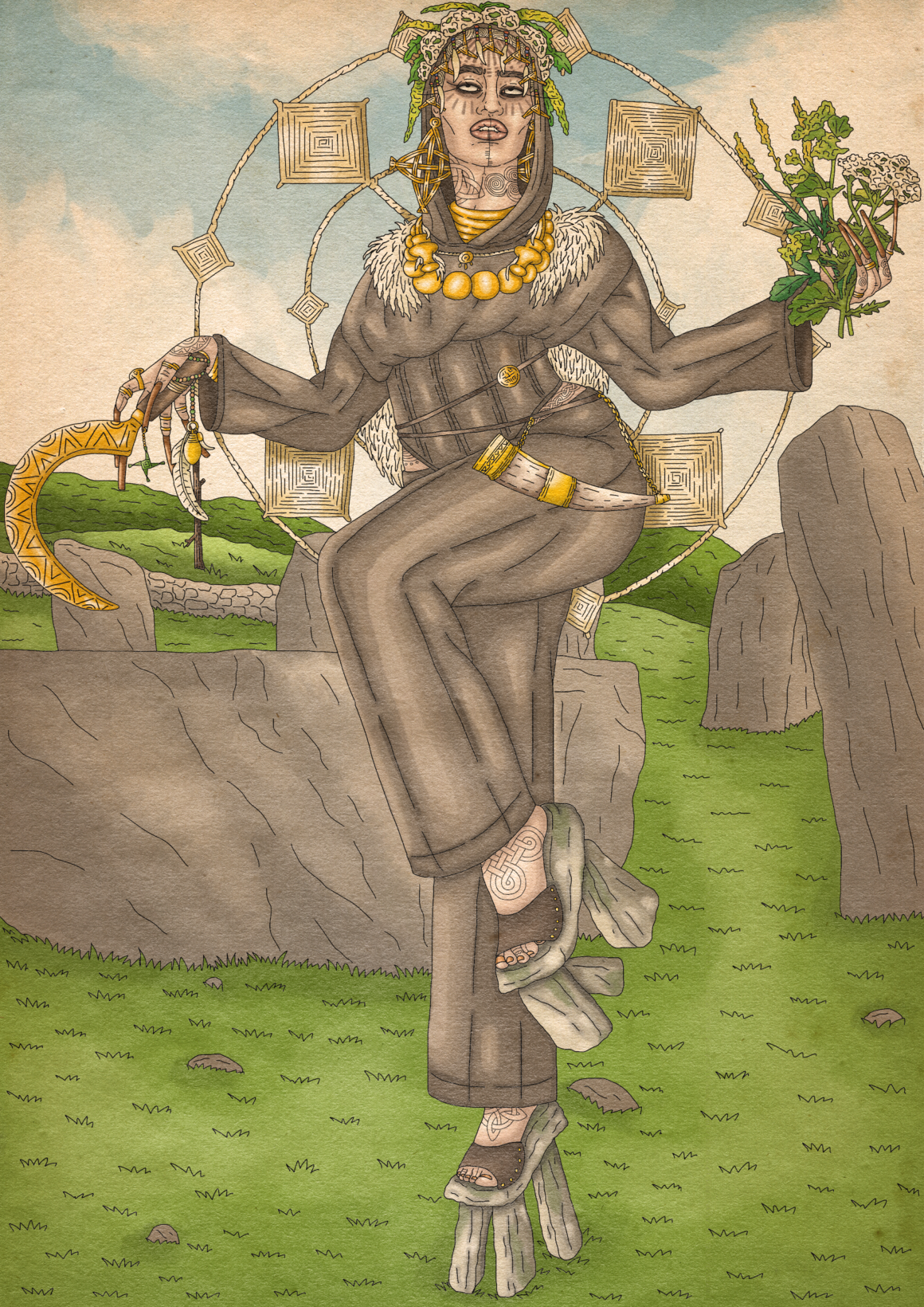
History, Folklore, and Mythology
Irish history, folklore, and mythology are at the heart of my artistic practice. Growing up, I was captivated by the mysticism of these stories. They added an enchanting element to everyday life, transforming the mundane into something extraordinary. As a child, I often retreated into my own imagination, creating worlds full of creatures and characters. This became a form of escape, allowing me to sit for hours drawing and painting the myths that fascinated me.
Living in rural Ireland, I was surrounded by stories passed down from my grandparents about fairies, ancient spirits, and other mystical beings. My family would often take us on day trips to ancient castles and woods, which fuelled my imagination. I would envision gods, goddesses, and otherworldly figures inhabiting the ruins and landscapes around me.
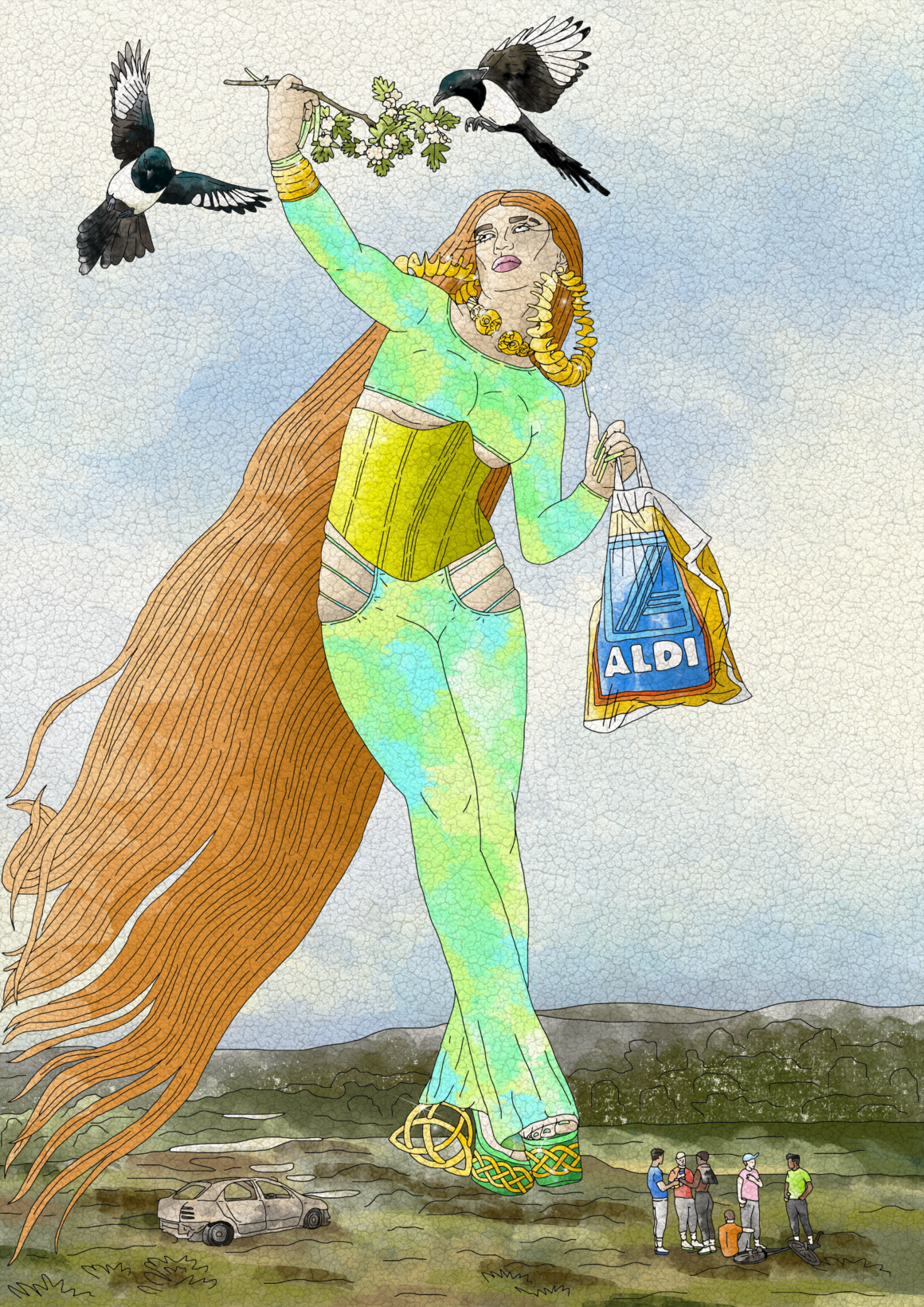
As a child of my generation, I was drawn to the mythology of other cultures – Egyptian and Greek myths, along with magical worlds in movies like Harry Potter. In a way, Irish folklore felt almost embarrassing to embrace, reduced to symbols like leprechauns and shamrocks. But as I grew older, I began to delve deeper into our native folklore, shifting my perspective from seeing it as something outdated to something vibrant and meaningful. I was amazed by its richness and complexity, and I realised that there is so much to discover. Even today, I feel as though I’ve only scratched the surface, with years of exploration ahead of me.
Ancient Myths for Today
In the early days of my work, I didn’t have a set style – I found myself bouncing from one interest to the next. But over time, I’ve developed a consistent theme in my art, which mostly stems from research into folklore. My long-haired characters, for example, are inspired by the Banshee, known for her long hair that she would comb endlessly. I’ve also drawn inspiration from the gold jewellery found in archaeological sites across Ireland and other Gaelic regions. But for me, the goal has been to reimagine these ancient artefacts in a contemporary context.
I wanted to see what would happen if an Instagram influencer had travelled back in time, posing atop the Hill of Tara, decked out in ancient torcs and brooches. This idea of blending ancient history with modern-day aesthetics fascinates me – what would our traditions look like if they hadn’t been lost or overlooked, but rather evolved alongside us?
The colours I use are often inspired by nature and the Irish tricolour. The flag’s palette of green, orange, and white has been a foundational colour scheme in my work. I gravitate towards these natural tones, such as greens, oranges, browns, and golds. However, I also enjoy adding pops of neon here and there, which is a little nod to my school days, when I would cover my notebooks in sketches with bright highlighters.

Having spent half of my life in the countryside and now living in the city, I feel like I have a unique perspective on urban life. Limerick is my new home, and it’s where I began the journey that has shaped my work today. I’ve always known I wanted to move to the city because I didn’t fully feel like myself in the country. But now, at this stage of my life, I’ve developed a deep love for both rural and urban life.
What I want to convey through my work is that there’s culture to be found in both rural and urban settings. Limerick itself is a blend of the old and new, which mirrors my work. I try to mix the modern elements of the city with the ancient traditions to show how our heritage can evolve and thrive in today’s world, without being lost in time.
A New Celtic Revival
I’d like to think that I’m contributing to a modern Celtic revival, as that’s definitely a goal of mine – to reimagine the stories and characters of the past that could otherwise be lost to time. These ancient figures and myths often remain in their original settings, not given new life in our contemporary world. Through my work, I want to highlight that Irish culture is not only important but also cool – as cringey as it might sound. Our mythology is a vast, never-ending pool of stories that anyone can explore, if they’re interested.
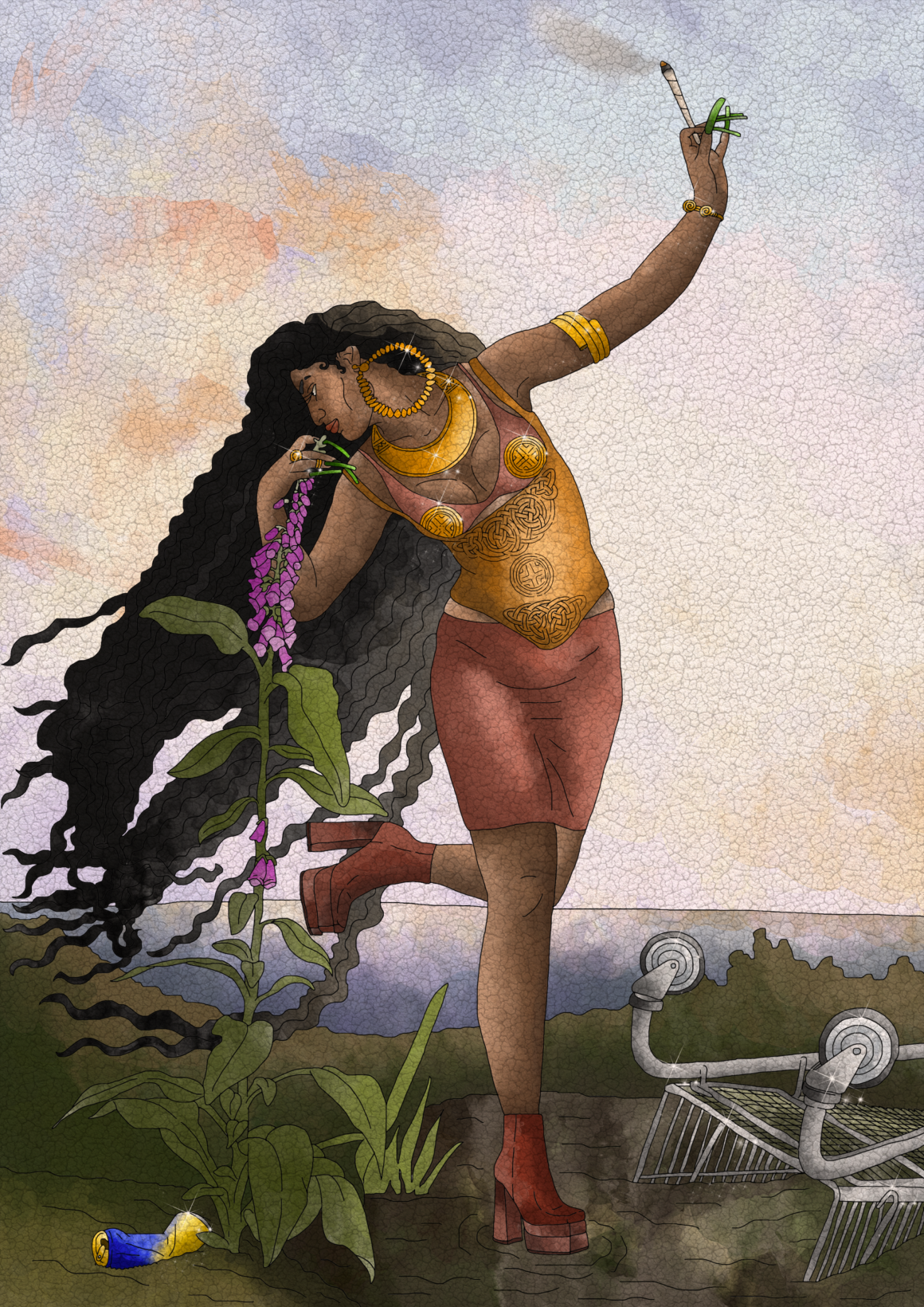
It’s inspiring to see so many other artists embracing this movement as well. Artists are taking symbols like the Claddagh design and turning them into modern icons of Irish fashion, moving beyond their association with tourist shops and souvenirs. I think it’s essential to celebrate the positive aspects of our history, while of course, not ignoring the more challenging parts. Irish artists today are doing a great job of balancing this, and I’m proud to be part of that conversation.
Merch and the Contemporary Artist
I’ve always had a love for fashion, and it was definitely a driving force in my work, especially in my earlier years, when I focused a lot on fashion illustration. So, it felt almost inevitable that I would eventually explore the world of merchandise. I wanted to find a way to bring my art to life and make it wearable, allowing people to own a piece of my work in a practical way. I also love seeing how people style my merch – it’s exciting to see how others interpret my designs.

I do believe that merch has become an important necessity for artists today. It provides an outlet to sell work on a larger scale than a single art piece would. Being a self-employed artist is challenging enough, but merch gives artists the chance to create something beautiful that people can wear, while also supporting the artist’s practice financially.
Up Coming
Right now, my main focus is continuing to develop the world I’ve created. I want to bring it more to life, and I feel that animation is where my passion lies at the moment. I’m largely self-taught in animation, and while it’s more challenging than working with still images, it’s a medium I’m really excited to explore further. So, for me, the goal is to continue honing my skills in animation and push myself in that direction.
I’ve also been working on creating a set of tarot cards, and I plan to release a physical deck soon that people can use. Tarot has fascinated me for a long time, and I feel that it fits so naturally with the themes of mythology and the occult that are central to my work. My mind often races with ideas, so it’s sometimes hard to focus on just one thing, but I think I’ll keep exploring new ventures and see what resonates with me and my audience the most.
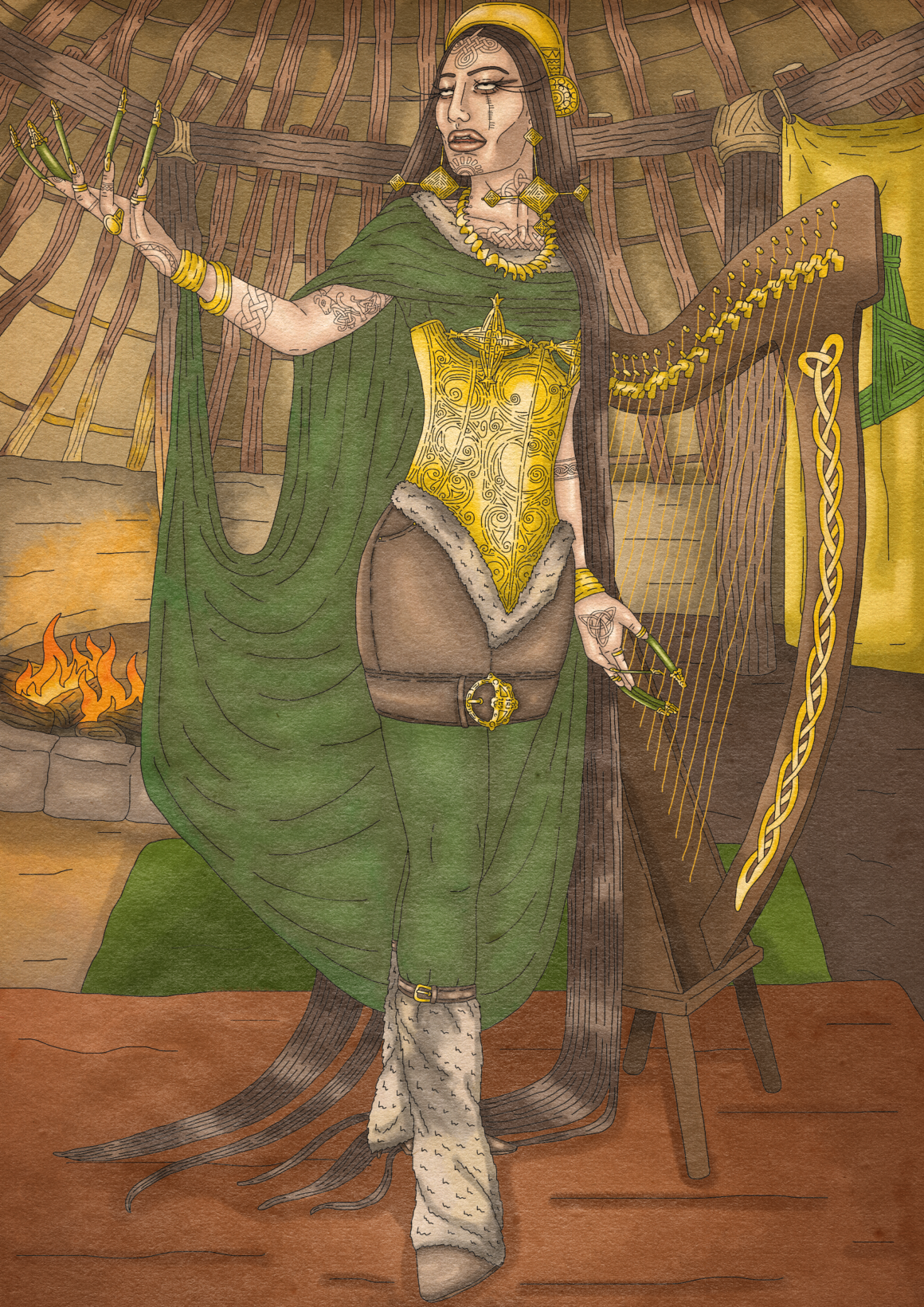
St. Diabhal is a visual artist whose work investigates Irish history and folklore and the strong role of masculinity and female empowerment within these stories.

